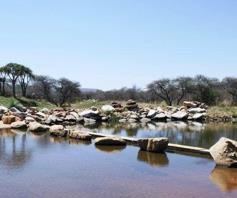From a real estate point of view, the most exciting aspect of President’s Jacob Zuma’s State of the Nation speech was the news that the long-awaited “gap” housing subsidy scheme is now under way and gathering steam.

There was some doubt, Everitt says, that the subsidy scheme, announced by the President in last year’s State of the Nation address, would actually get off the ground, “but now the money for it, as the President noted this week, is flowing from the provincial housing budgets as planned, and it is up and running.
So says Berry Everitt, MD of the Chas Everitt International property group, who notes that this scheme (more properly called the Finance-Linked Housing Subsidy Programme) promises to open up housing opportunities to hundreds of thousands of people who have previously been shut out of the property market because they earned too much to qualify for a State housing subsidy and too little to qualify for an ordinary home loan.
“Currently this ‘gap market’ is reckoned to consist of people earning between R3 500 and R15 000 and is estimated to contain more than 20% of SA’s workforce, including many teachers, nurses and police officers, who will now have a real chance to become homeowners and start building a financial foundation for their families.
“And that is a very positive indicator for the future of SA’s residential property sector as a whole, firstly because it will increase social stability and secondly because it will broaden the market base and, in time, have a ripple effect on demand and prices as the new entrants start to upgrade.”
There was some doubt, Everitt says, that the subsidy scheme, announced by the President in last year’s State of the Nation address, would actually get off the ground, “but now the money for it, as the President noted this week, is flowing from the provincial housing budgets as planned, and it is up and running.
“More than R126bn has been committed to date, with more than R70bn already having been allocated to buyers in 12 approved gap housing projects such as Walmer Link in Port Elizabeth, Lady Selbourne and Nelmapius in Pretoria and Cosmo City in Johannesburg, where the maximum home purchase price is around R300 000.”
The subsidy – which is being administered by the National Housing Finance Corporation - is available on a sliding scale to prospective homebuyers in the gap market who have clean credit records. Households earning R3 501 a month are understood to qualify for the maximum of around R84 000 while those earning R15 000 a month can access about R10 000.
Even better, whatever subsidy a household obtains is immediately applied to the purchase price of their new home so that the size of the home loan they need is reduced, says Everitt. "This makes it easier for them to qualify for a loan in terms of the banks’ current strict lending criteria, and easier to afford the monthly home loan repayments and enjoy the pleasures of home ownership.”








